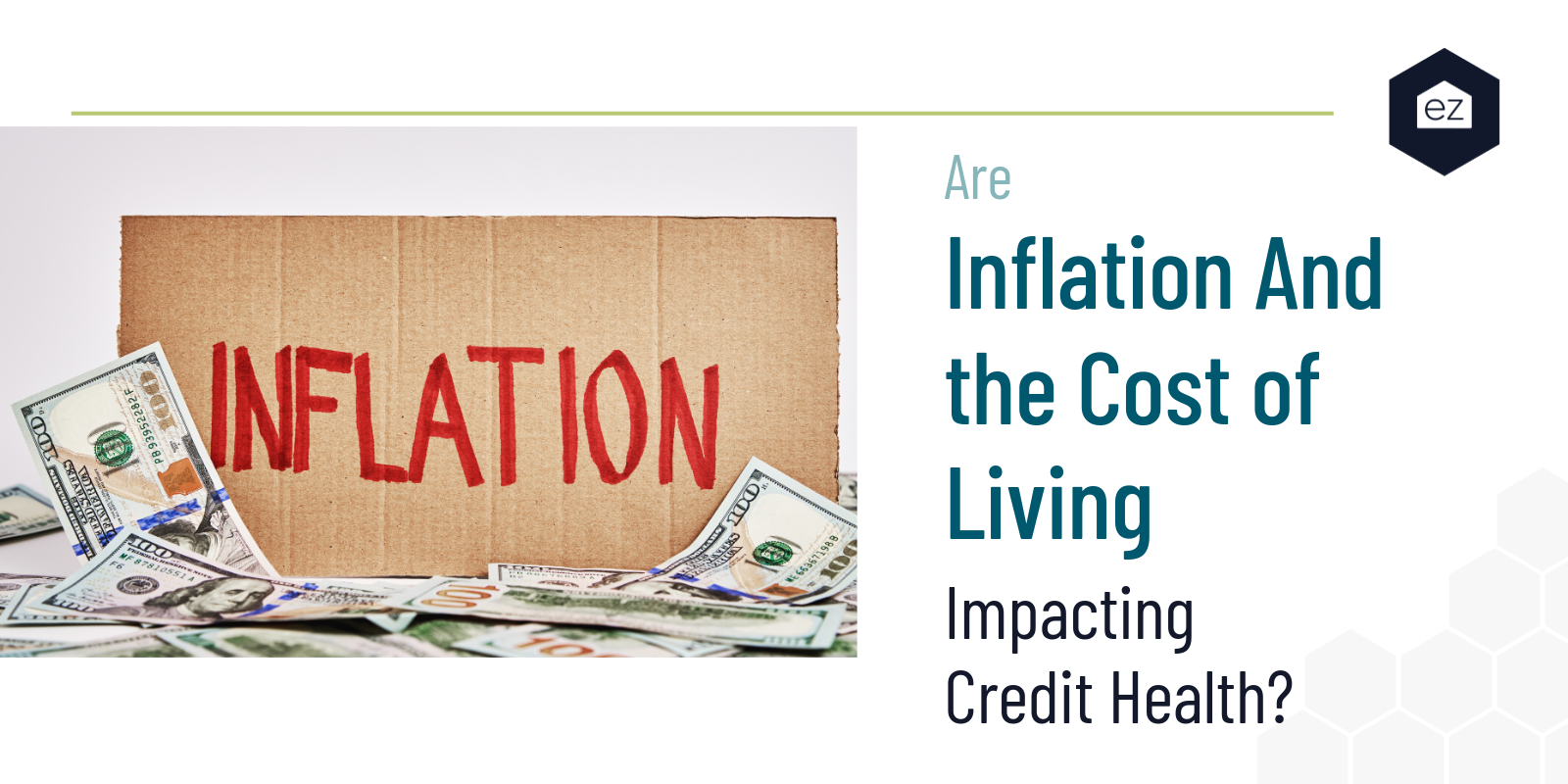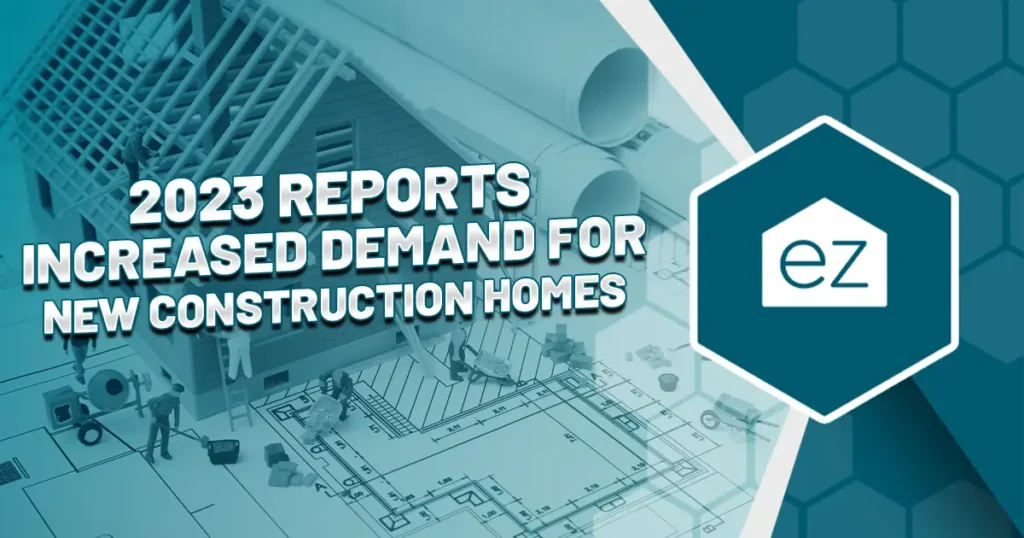Are Inflation And the Cost of Living Impacting Credit Health?

Are Inflation And the Cost of Living Impacting Credit Health?
Your credit score is like the heartbeat of your financial life, the key vital sign determining your ability to get a mortgage. A high credit score can save you thousands of dollars—if not tens of thousands—over the life of a loan. So it’s no wonder that people have been worried about the impact inflation and a higher cost of living might have on their credit health.
Inflation makes goods and services more expensive, increasing the cost of living. And a higher cost of living means slimmer margins for paying off debt. For many home buyers, this can create a vicious circle: the higher your credit utilization, the lower your credit score. As your credit score drops lower, there’s less home to afford.
Let’s take a deep dive into inflation, the cost of living, and how it might impact your credit health.
Credit Health: What You Need to Know

Simple: credit scores are designed as a summation of our ability to pay off loans and meet all our debt obligations. It’s a complicated formula aimed at distilling a lot of information about your borrowing and payment history into an easy-to-understand single-glance metric.
Here are just a few of the variables that feed this formula:
- Number of open accounts. The more places you owe, the more complicated your credit life can be.
- Debt amount. How much debt have you taken on, especially in relation to how much income you have? Lenders call this the debt-to-income ratio. If you carry $100,000 in debt but make an income of $50,000, that’s a tremendous amount of debt. If you have $100,000 in debt on an income of $250,000, it’s easier for you to pay off that debt, which hints at better creditworthiness.
- Repayment history. Are you constantly late in paying back loans? Have creditors been after you in the past? If so, they can represent powerful dings against your credit.
- Credit utilization. Credit utilization is the ratio of your available credit to your borrowed credit. Generally, having more credit to borrow gives you more flexibility, which leads to a higher score.
This is a broad-strokes summary of the factors included in calculating your credit score. But they all hint at whether you can repay a new loan.
When you rent an apartment or apply for a mortgage, the people or institution approving your application will run your credit. Why? It makes for a straightforward evaluation of your borrowing history and your risk of defaulting on the loan or not making payments.
As the world grows more expensive, you may have become less credit-worthy simply because a lender’s margin for error is that much slimmer.
How Inflation and the Cost of Living Can Impact Borrowers

Not every part of the credit score formula is entirely within your control. Inflation and the high cost of living can reduce your ability to repay loans, even if you entered into those loans with the best possible intentions.
A January 2023 study from VantageScore found that overall, credit scores remain resilient to what’s been happening in the economy. The average credit score at VantageScore remains stable at about 696.
But there are a few signs of cracks in the foundation. In particular:
- Tighter credit requirements. Even if the average score is the same, if credit issuers want higher credit scores to qualify for their products, it still affects you. CreditGauge data, according to VantageScore, shows that new credit card approvals have been slower between December 2021 and 2022. Given the prominence of inflation during 2022, it’s not hard to find the potential culprit there.
- Delinquent repayment. Credit borrowers are having more trouble paying off debt. The data shows that later-stage delinquencies (60-119 days past due) rose in December 2022. This makes the level higher than before the pandemic across all categories except for mortgages.
- Higher utilization. Utilization refers to the part of the credit score formula that looks at the amount you borrow compared to how much you can potentially borrow. For example, suppose your balance on a credit card is 10% of the maximum limit. In that case, you have a 10% utilization on that account. If utilization is going up, it means that your margin for error is slimming. That’s what the data showed in December 2022. Credit card balances rose to an average of $5,900 at that time. VantageScore also noted that average utilization rates have increased to 31%, showing that more people are carrying heavier balances without paying them off.
If we were to look at the average credit score, we wouldn’t see much impact from inflation or the cost of living on credit health. But a deeper dive into what’s happening in credit scores and cards shows it’s not so simple. Inflation is having an impact by reducing the margin for error as borrowers’ credit balances are increasing over time.
Delinquency Trends Point at the Impact of Inflation and COL

Browse the CreditGauge report, and you’ll see a chart labeled “Delinquency Trends.” As inflation grew red-hot in the United States throughout 2022, delinquency rates ticked upward. That’s not a surprise. With less financial wiggle room in their monthly budgets, Americans delayed or missed making many credit card payments.
What does this mean for home borrowers? If mortgage lenders are anything like credit card companies, we may see tighter credit restrictions in the future. That means less home affordability for the average American at a time when they could use it the most.
Start Your Home Search
Preston Guyton
Share this Post
Related Articles
Real Estate News
White House Proposals Aim to Boost Housing Supply
Real Estate News
NAR Settlement Set to Reshape The Business of Real Estate
Real Estate News
2023 Reports Increased Demand for New Construction Homes
Real Estate News





